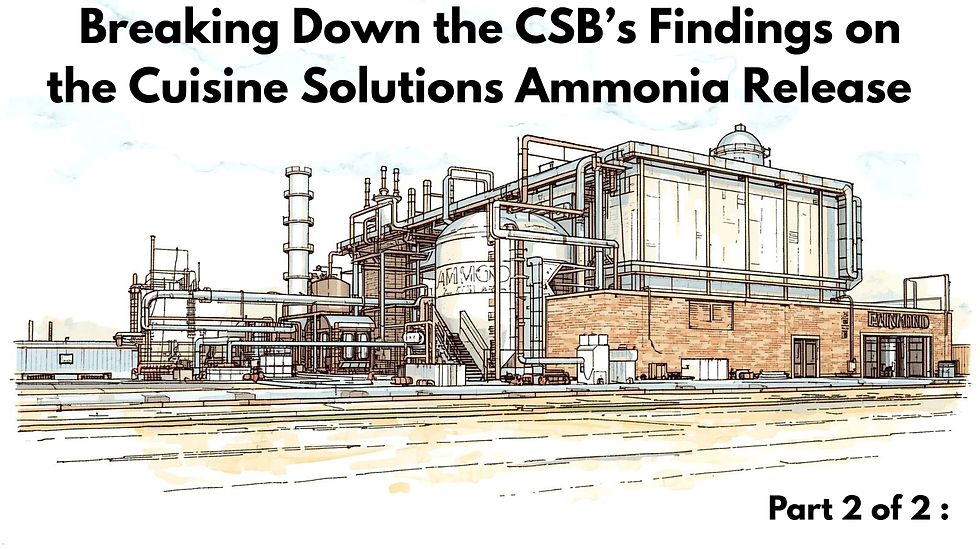The Hidden Costs of Poor Documentation in PSM Programs | Blog No. 95
- Payton Lemons

- 3 days ago
- 3 min read

When most people think about Process Safety Management, the first things that come to mind are inspections, training, and compliance deadlines. But one of the biggest and most overlooked challenges is poor documentation. Missing or outdated records may seem like a minor issue, but over time, they can lead to significant problems, including delays, audit findings, and unnecessary expenses.
1. The Real Cost of Missing Information
In ammonia refrigeration and other industrial systems, documentation isn’t just paperwork it’s proof that your facility is operating safely and within compliance. Every piece of information, from Process Safety Information (PSI) to Management of Change (MOC) records, supports the integrity of your safety program.
When documentation is incomplete or disorganized, it causes real issues:
Audits take longer because inspectors and internal teams have to hunt for missing files.
Maintenance gets delayed when technicians don’t have accurate equipment data or past inspection reports.
Compliance exposure increases, which can lead to findings, fines, or even temporary shutdowns.
Something as simple as forgetting to update a P&ID or leaving out a valve replacement can turn into a costly problem later on.
2. How Documentation Gaps Slow Down Productivity
Poor documentation doesn’t just cost money through fines it also slows down day-to-day operations. When operators spend extra time tracking down an old procedure or trying to confirm equipment specs, productivity takes a hit.
Over time, this leads to confusion during maintenance, inconsistent procedures between shifts, and extra stress during audits or inspections. Weak document control turns into wasted hours, and wasted hours turn into wasted money.
3. Simple Ways to Improve Documentation
Improving your documentation system doesn’t have to be complicated or expensive. A few consistent habits can make a big difference:
Keep files in one place, preferably in a shared digital folder or system that everyone can access.
Assign responsibility so each key document has someone who keeps it updated.
Include documentation accuracy in your internal audit process.
Train your team on the importance of good recordkeeping, not just on how to fill out forms.
Facilities with clear, up-to-date records move faster, respond better to issues, and perform much more confidently during audits.
4. Documentation Is an Investment
It’s easy to see documentation as an administrative task, but it’s really an investment in your operation’s reliability. A few extra minutes spent keeping records organized can prevent hours of confusion or rework later. When your documentation is clean and easy to navigate, it sends a strong message to your team, to auditors, and to customers that safety and organization matter.
Final Thoughts
Strong documentation is one of the simplest ways to strengthen your PSM program. It protects your facility, saves money, and reduces stress when inspections or audits come around. Think of it as part of your safety equipment it’s just as essential as any valve or relief system.
At Macha PSM, we’ve seen that facilities with solid documentation practices run smoother, stay compliant, and avoid costly surprises. A little attention to recordkeeping today can prevent big problems tomorrow.
Thanks for reading!
Previous Post: Post-Weld Heat Treatment of Pressure Vessels | Blog No. 94

For a comprehensive training on Anhydrous Ammonia, click here for our PSM Academy Ammonia Awareness training, to learn and earn a certificate of completion. Training is in English and Spanish. Use code SDS20 for a 20% discount on the entire purchase. For more information, email us at academy@machapsm.com.





Comments